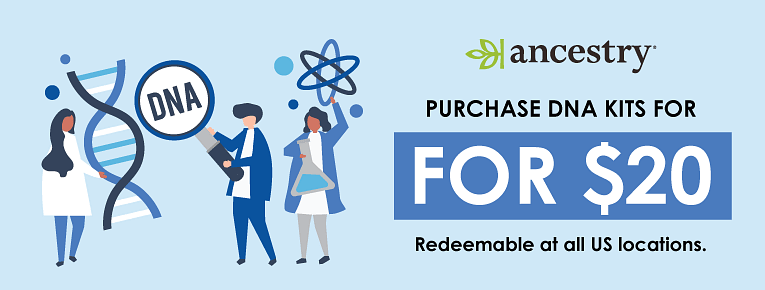magine you just got your results back from your AncestryDNA® test and you are blown away by all of the different peoples and places you’re connected to. You got 25% Scotland, 12% Japan, and so on. How exciting!
Of course, with something as complicated as a DNA test, there are bound to be some misunderstandings and myths. We are here to clear up a few of them.
For instance, someone from Northern Italy might get 2% France but have no relatives from France.
Some people with a long family history in Northern Italy, for example, will have a smidge of France appear in their ethnicity estimate. But this doesn’t mean they have relatives from France.

Instead, this is just a reflection of the fact that Northern Italy and France have a lot of shared DNA, because they have a lot of shared history.
Other examples of world regions that have a lot of shared history include:
- Germanic Europe and Eastern Europe & Russia
- Benin & Togo and Ivory Coast & Ghana
- Scotland and Ireland
So someone with roots back to Ghana may get a bit of Benin & Togo in their results. Or someone from Scotland could get a bit of Ireland.
For instance you might expect three siblings with the same biological parents to all have very similar ethnicity estimate results.
But this isn’t necessarily the case. For instance, three biological siblings’ Spain and Portugal ethnicity estimates could look like this:
- Sibling 1: 21% Spain and 13% Portugal
- Sibling 2: 27% Spain and 2% Portugal
- Sibling 3: 26% Spain and 6% Portugal
And one sibling, say sibling #3, could have 4% Ireland in their ethnicity estimate while the other two siblings have no Ireland in their ethnicity estimate.
This is because although full siblings all get 50% of their DNA from Dad* and 50% of their DNA from Mom*, they don’t all get the same 50% from each biological parent.
For example, just because Eastern Europe & Russia doesn’t appear in your ethnicity estimate doesn’t mean you don’t have relatives in Eastern Europe.
There are many ways to have relatives from a certain part of the world and yet not see that ethnicity in your DNA results.
The most common reason is that it’s been too long since your relatives lived in that region. If you go back far enough in time, it could be that you don’t have enough of a relative’s DNA to see their ethnicity in your results.
Another possibility is that AncestryDNA® test results don’t yet include that specific region. In that case, you would most likely get a mix of nearby regions.

For instance, we now include France in our ethnicity estimate, but before it was added, people with DNA from France instead had the region “Western Europe” appear in their test results.
